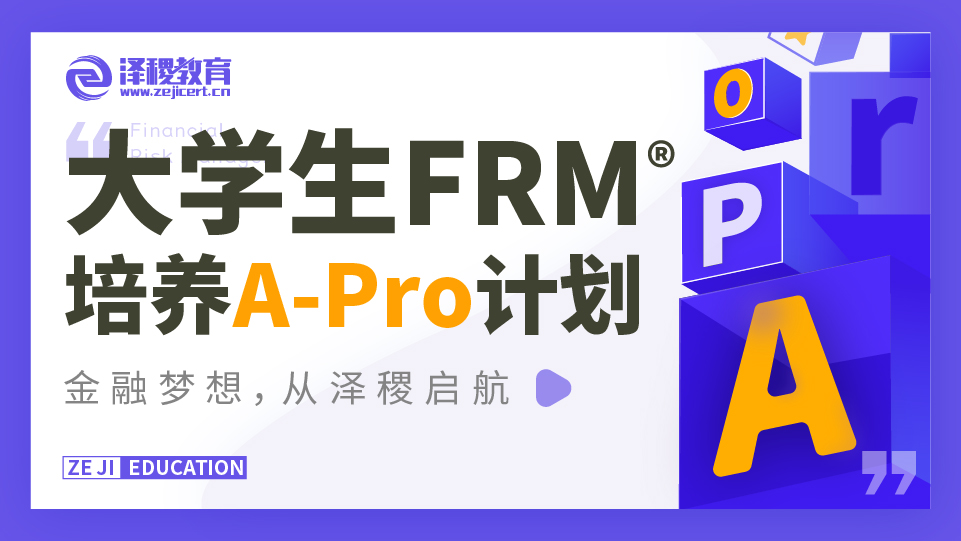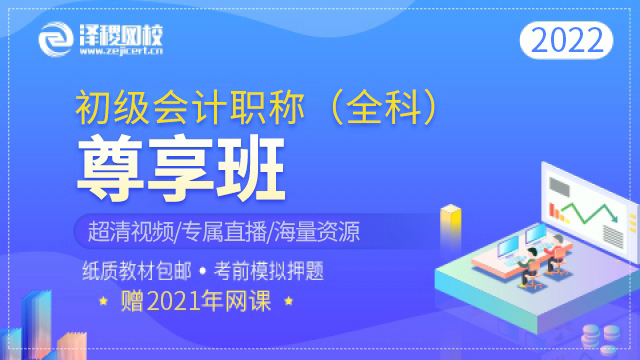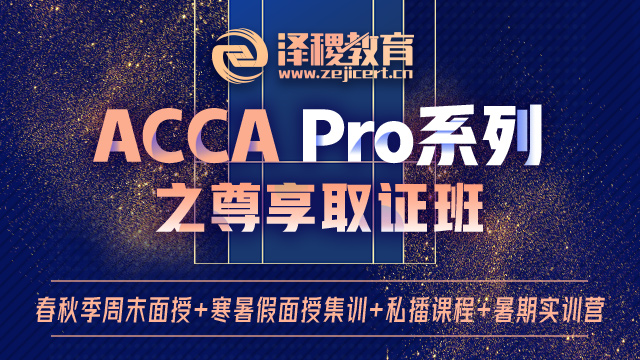ACCA P5 考官文章 READING THE QUESTION REQUIREMENTS OF PAPER P5
An insight into some common problems and misconceptions surrounding Paper P5. The article considers how to carefully understand the question requirement with use of selected examples from the past three Paper P5 exams
The aim of this article is to try to provide an insight into some common problems and misconceptions surrounding the Paper P5 exam, improving your chances of success. These comments are probably going to be most relevant when you are attempting past paper questions during revision.
The main activity that this article will consider is how to read the question requirement. The points made here will be illustrated with examples from Paper P5 from the last three exam sessions. In order to keep the article to a sensible length, only the actual requirements will be reproduced here; it will be useful to read this article in conjunction with the past papers that are referred to and which are available on the ACCA website (see 'Related links').
The question requirement usually gets a great deal of attention from the examiner who first writes it and the team of reviewers who perform more than five layers of review before the exam is finalised. It is written carefully and should also be read carefully. So my first recommendation is take time to read the requirement because every word and phrase will have significance.
Let’s begin with examples of both correct and incorrect interpretations of a requirement.
Example: June 2011 exam, Question 2
Required:
(a) Describe how the implementation of a balanced scorecard delivers a range of performance measures aligned with the corporate strategy.
(b) Evaluate the performance measures proposed for [the company] PT’s balanced scorecard.
(c) Identify and analyse the influence of four different external stakeholders on the regulator (BDR).
(d) Using your answer from Part (c), describe how the application of the balanced scorecard approach at BDR would differ from the approach within PT.
Part (a) asks for a description of how the use of the balanced scorecard helps to give a set of performance measures aligned with corporate strategy. It does not ask how to implement a balanced scorecard. It does not ask how the use of the balanced scorecard gives you performance measures. It does not ask you to give a long list of performance measures associated with the four headings of the balanced scorecard. Check that you can see how each of these mis-interpretations arises from only reading part of the requirement.
Part (b) asks for an evaluation of the performance measures at the given company (PT). It does not ask you to evaluate the performance of PT using the performance measures. Evaluating the measures means considering their advantages and disadvantages in particular. This type of requirement usually requires you to check whether the measures are going to help to achieve the objectives of such a set of measures (probably by reference to the mission of the company).
Part (c) asks you to identify four external stakeholders and analyse their influence at BDR. Analysis is obviously much harder than identification, so do not expect to score high marks simply by listing stakeholders. The requirement asks for external stakeholders, so do not expect any marks for internal stakeholders. The requirement asks for the stakeholders of BDR, so do not expect marks for any other company’s stakeholders. (These statements may seem incredibly basic but they are made here because the marking team saw many examples of such mistakes in this paper.) Check that you can see how these mistakes are made and undertake plenty of revision practice to avoid them.
Part (d) asks you to describe how implementation of the balanced scorecard is different at two different organisations. It does not ask you to describe how to implement at one or the other organisation. Therefore, each point must refer to how the model works at one organisation and then shows how this is different at the other one. There may be some credit given for mentioning where there are similarities of implementation too.
My next point is to give two further examples of the problem noted with Part (b) above. The problem is the continuing belief that if a candidate is in doubt about a question that begins with ‘evaluate’ or ‘assess’, then they can just evaluate the performance of the company in the scenario. This is a strikingly common way to score very few marks unless the question actually asks you to evaluate/assess the performance of the company. Here are two recent examples:
Example: December 2011 exam, Question 4, Part (a)
Assess the suitability of the branch information given as a means of assessing the shop manager’s performance for this store, providing suitable additional calculations.
This does not ask for an assessment of the shop’s performance or the shop manager’s performance. It asks for an assessment of the information given as a way of assessing the shop manager’s performance.
Example: December 2011 exam, Question 2, Part (c)
Evaluate the current system using the performance pyramid and apply the performance pyramid to Cod in order to suggest additional KPIs and a set of operational performance measures for Cod.
This does not ask for an evaluation of the performance of Cod. It asks for an evaluation of the current system (the system being asked about was the performance measurement system that was referred to through the rest of the question).
In both of the above examples, there is some relevance in providing illustrative calculations of performance but this is not the thrust of the question. Check that you can see how merely talking about the performance of the company or individual is not fully answering the question.
Next, let’s look at the structure of the whole requirement. The examiner will often write the different parts of a question requirement in a linked way and identifying this can help to give your answer a logical flow that will make mark scoring much simpler. Here is an example:
Example: December 2010 exam, Question 1
(a) Explain the difference between the following two types of critical success factors (CSFs): monitoring and building, using examples appropriate to FP.
(b) Identify information that FP could use to set its CSFs and explain how it could be used giving two examples that would be appropriate to FP.
(c) For each of the two CSFs given in the question, identify two performance indicators (PIs) that could support measurement of their achievement and explain why each PI is relevant to the CSF.
(d) Discuss the implications of your chosen PIs for the design and use of the company’s website, its management information system and its executive information system.
Part (a) asks for an explanation of two categories of CSF using the question to provide illustrative examples. Now that you are thinking about CSFs, Part (b) asks you what information you would look for in the scenario to help you set these. Part (c) then asks you to set PIs for these CSFs (an application of a method of setting strategic PIs to this scenario). Finally, Part (d) requires a discussion of how your choice of PIs affects information systems at the scenario company. So my advice is always read the whole question requirement because the logical flow may actually help you to understand each of the individual tasks.
In the Professional level papers, you will be required to ‘evaluate’ and ‘assess’ more often than ‘describe’ or ‘explain’. These question words represent different levels of thinking – ‘describe’ and ‘explain’ more often will require you to recall your knowledge, whereas ‘evaluate’ and ‘assess’ require you to apply that knowledge to reach a judgment.
Let me illustrate the difference by looking at ‘evaluation’. To ‘evaluate’ means to judge or determine the value, worth or quality of an object. If that object is the performance of a company, then the answer can be expected to be descriptive but based on numerical measures (such as profit, present value or EVA). But if that object is a performance system, or a costing method, or a remuneration package, then a candidate is expected to weigh up the advantages and disadvantages of that method – possibly in comparison to other appropriate ways of doing things. It should also be noted that weighing up the advantages and disadvantages means more than simply listing them – it requires a final application of judgment as to what is appropriate in the given scenario. (Assessment is a very similar exercise in most circumstances.)
The above example also points to two other common omissions in answers to Paper P5 questions. First, if the requirement – in asking for an explanation or description – names a specific company or asks for illustrative examples from the scenario, then you should be aware that referring to the scenario and providing relevant examples will probably hold the bulk of the marks in the question, not the definitions of the technical terms.
Second, whenever you are tempted to offer an opinion (and I would recommend that you do offer positive opinions and advice), it should be justified – see the following example.
Example: December 2011 exam, Question 1, Part (iii)
Recommend an appropriate choice of method of assessing the project and, therefore, a course of action for the APV contract.
The marks in this part are for justifying a choice that is consistent with your earlier analysis. An answer is not going to be given marks for simply giving an unjustified opinion (eg only stating that ‘You should use expected values’) and marks are unlikely to be given for an answer that perches precariously on the fence (eg ‘You should use expected values, maximax, maximin and minmax regret to make your decision.’).
Instead, a good answer might be: ‘Given the difficult economic circumstances and the risk aversion of key stakeholders, it is recommended that a maximin approach is taken to project evaluation.’ Check that you can see how this gives two reasons for the choice of recommended method. Also, notice that a justification does not have to be lengthy. (The length of an answer depends on your judgment of the expectations of the examiner, which is usually best done through the mark allocation.)
Finally, I want to mention two other small points.
- While I would encourage you to demonstrate a professional approach to presentation, you only need to do report headings where there are professional marks and a report has been specifically requested. The exam is time-limited, as are the professional marks, and you cannot be awarded professional marks that are not noted in the original question requirement. This does not mean that a logical, structured answer is not required.
- There is a common misconception – evident from thousands of candidate answers – that financial performance indicators are always being manipulated and non-financial performance indicators are less open to manipulation. Stop and think about what this implies: (a) that the people that prepare financial reports are generally unethical; and (b) that the controls over financial information systems are less severe than non-financial information systems. Your studies so far of professional ethics and the controls surrounding financial reporting systems should immediately indicate that these implications are false. However, you would be correct to state that there is a danger of manipulation and that this is exacerbated by inappropriate reward systems (a ‘bonus culture’).
I hope that these comments will be helpful to you in your preparation for the Paper P5 exam.
Written by a member of the Paper P5 examining team
温馨提示:2016年新考季,泽稷网校ACCA名师为大家准备了2016 ACCA学习资料大礼包(内含ACCA历年真题、考官文章、考官报告、备考宝典等实用学习资料),关注微信公众号:ACCA考友论坛(ID:ACCA-CHN)即可领取:






 白金级认可培训资质(总部)
白金级认可培训资质(总部)
 课程试听
课程试听
 职业规划
职业规划
 ACCA中文教材
ACCA中文教材
 考位预约
考位预约
 免费资料
免费资料




 题库下载
题库下载
 模拟机考
模拟机考




 CFA®成绩查询
CFA®成绩查询




 GARP协会官方认可FRM®备考机构
GARP协会官方认可FRM®备考机构




















